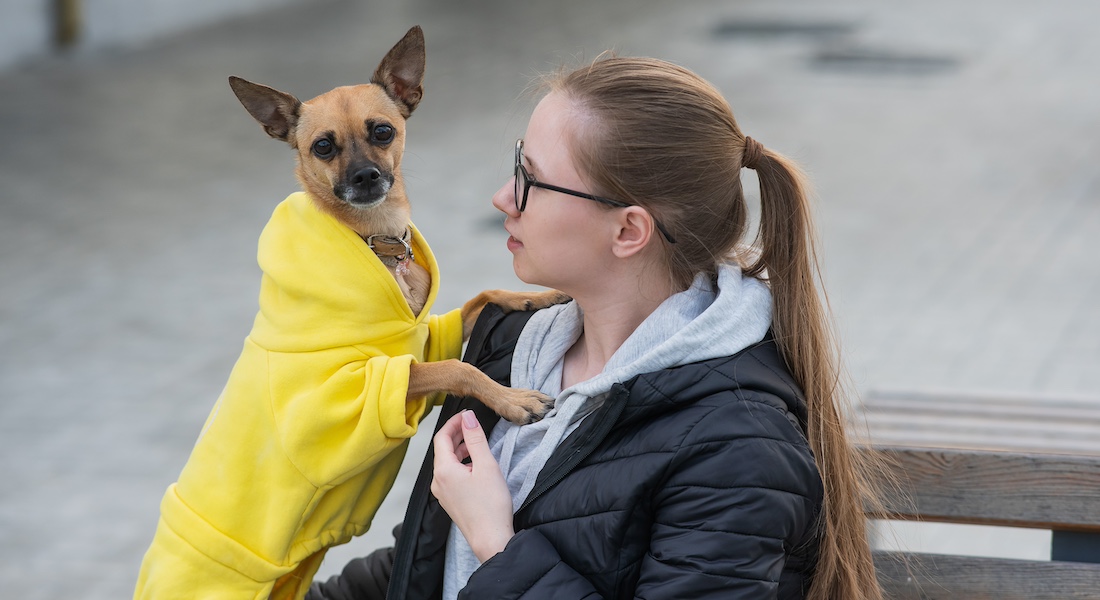How is Human Socioeconomic Position Linked with Dog Ownership Practices? A Study from Denmark

Lund, T. B., Forkman, B., Meyer, I., & Sandøe, P. (2024)
ANTHROZOÖS. Routledge
New study investigates social patterns of dog ownership in Denmark
Summary written by Alison Skipper
Our social backgrounds deeply influence the way we live our lives. However much we like to think of ourselves as free agents, we tend to buy similar things and enjoy similar activities to our neighbours, friends, and other people with similar socioeconomic status – and these factors also shape our relationships with companion animals.
An interesting new study by Thomas Bøker Lund, Peter Sandøe and other colleagues at the University of Copenhagen published in the journal Anthrozoos has explored Danish petkeeping patterns in detail, particularly focusing on dogs. The researchers used data from more than 2,000 people to map how dog ownership varies across Danish society. As they note, Denmark is an affluent country with relatively low levels of social inequality – and yet their study still shows some striking differences in dog ownership between social groups.
Mapping Danish dog ownership
One in five Danish families has a canine companion – they are the most popular pet species in Denmark, with cats second and the rest nowhere. As you might expect, dog ownership peaks among middle-aged people in family households, with young adults and the elderly less likely to keep a dog. Almost half of rural Danish families include a dog, but dog ownership decreases as housing becomes more urban. In the biggest cities and in apartment blocks, only one in ten households has a dog.
Despite these geographical trends, Lund and his colleagues found that dog ownership was not linked to levels of income, education, occupation, or the socioeconomic status of the neighbourhood that people live in. So – at least among Danes – keeping a dog may be part of a wider lifestyle choice, rather than a luxury that only the wealthy can afford.
Dogs and status
Even in Denmark, however, different types of people choose different types of dogs. Choosing a purebred dog with a pedigree is more common among people with with high-status occupations and highest incomes. In contrast, the lower a family’s income, the more likely they are to have a mixed breed dog instead. Similarly, families with the highest incomes are much more likely to buy the most expensive dogs (purchasing them for over $1500 US dollars, approximately). These costly canines are also more common in the most affluent neighbourhoods in Denmark – even among people who have lower incomes than their neighbours.
As Lund and his colleagues point out, this ‘neighbourhood effect’ is seen with other consumer purchases too, such as cars. It is an open question whether less well-off people in affluent areas are just copying their wealthier neighbours because they like the dogs they see locally, or whether they are aiming to ‘keep up appearances’ and getting an expensive dog to enhance their social status.
Why have a dog, anyway?
The Danish team also dug more deeply into people’s key reasons for getting a dog. Across all social groups, most people bought their dog primarily as a pet for themselves or their families. However, people rated the key benefits of living with a dog very differently, depending on their circumstances. People who live in the wealthiest neighbourhoods are twice as likely as those in the poorest areas to hope that their dog would encourage them to take exercise. This might be because wealthier areas are more suitable for exercise, or because affluent people feel the need to get outside and exercise after working at sedentary desk jobs, whereas those with lower incomes might have manual jobs and be less likely to exercise in their spare time.
Higher educated people are also more likely to get a dog simply because they enjoy living with animals.
In contrast, people with less education are more likely to have a dog for social support or because it’s useful to them. This tendency is particularly strong among people that suffer from social isolation. Those with the lowest level of education are three times more likely to keep a dog for social support than those with the highest levels of education.
This suggests that, even in famously happy Denmark, dogs may be a key lifeline for some of the most vulnerable people in society. For those in more privileged situations, though, dog ownership may mostly be another way of adding pleasure to an already comfortable lifestyle.
How is Human Socioeconomic Position Linked with Dog Ownership Practices? A Study from Denmark (URL)
